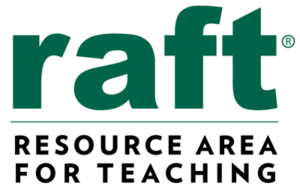Building it Bigger
Explore how scale affects volume in this hands-on, pyramid building activity.
Standards
Idea Sheets are cross-referenced to subjects listed in the Common Core, Next Generation Science Standards, and California Content Standards.
Science and Engineering Practices: 1. Asking Questions and Defining Problems 2. Developing and Using Models 3. Planning and Carrying Out Investigations 4. Analyzing and Interpreting Data 5. Using Mathematics and Computational Thinking 6. Constructing Explanations and Designing Solutions 7. Engaging in Argument from Evidence 8. Obtaining, Evaluating, and Communicating Information ||Next Generation Science Standards||Grade 4||Science and Engineering Practices|||Science and Engineering Practices: 1. Asking Questions and Defining Problems 2. Developing and Using Models 3. Planning and Carrying Out Investigations 4. Analyzing and Interpreting Data 5. Using Mathematics and Computational Thinking 6. Constructing Explanations and Designing Solutions 7. Engaging in Argument from Evidence 8. Obtaining, Evaluating, and Communicating Information ||Next Generation Science Standards||Grade 5||Science and Engineering Practices|||5.MD.3. Recognize volume as an attribute of solid figures and understand concepts of volume measurement.||Common Core Mathematics||Grade 5||Measurement And Data||Geometric Measurement: Understand Concepts Of Volume And Relate Volume To Multiplication And To Addition|||5.MD.4. Measure volumes by counting unit cubes, using cubic cm, cubic in, cubic ft, and improvised units.||Common Core Mathematics||Grade 5||Measurement And Data||Geometric Measurement: Understand Concepts Of Volume And Relate Volume To Multiplication And To Addition|||5.MD.5. Relate volume to the operations of multiplication and addition and solve real world and mathematical problems involving volume.||Common Core Mathematics||Grade 5||Measurement And Data||Geometric Measurement: Understand Concepts Of Volume And Relate Volume To Multiplication And To Addition|||Science and Engineering Practices: 1. Asking Questions and Defining Problems 2. Developing and Using Models 3. Planning and Carrying Out Investigations 4. Analyzing and Interpreting Data 5. Using Mathematics and Computational Thinking 6. Constructing Explanations and Designing Solutions 7. Engaging in Argument from Evidence 8. Obtaining, Evaluating, and Communicating Information ||Next Generation Science Standards||Middle School||Science and Engineering Practices|||Solve Real-World And Mathematical Problems Involving Area, Surface Area, And Volume||Common Core Mathematics||Grade 6||Geometry|||6.G.2. Find the volume of a right rectangular prism with fractional edge lengths by packing it with unit cubes of the appropriate unit fraction edge lengths, and show that the volume is the same as would be found by multiplying the edge lengths of the prism. Apply the formulas V = l w h and V = b h to find volumes of right rectangular prisms with fractional edge lengths in the context of solving real-world and mathematical problems.||Common Core Mathematics||Grade 6||Geometry||Solve Real-World And Mathematical Problems Involving Area, Surface Area, And Volume|||7.G.6. Solve real-world and mathematical problems involving area, volume and surface area of two- and three-dimensional objects composed of triangles, quadrilaterals, polygons, cubes, and right prisms.||Common Core Mathematics||Grade 7||Geometry||Solve Real-Life And Mathematical Problems Involving Angle Measure, Area, Surface Area, And Volume|||7.RP.2. Recognize and represent proportional relationships between quantities.||Common Core Mathematics||Grade 7||Ratios And Proportional Relationships||Analyze Proportional Relationships And Use Them To Solve Real-World And Mathematical Problems|||Solve Real-World And Mathematical Problems Involving Volume Of Cylinders, Cones, And Spheres||Common Core Mathematics||Grade 8||Geometry|||Understand Congruence And Similarity Using Physical Models, Trans- Parencies, Or Geometry Software||Common Core Mathematics||Grade 8||Geometry|||8.G.9. Know the formulas for the volumes of cones, cylinders, and spheres and use them to solve real-world and mathematical problems.||Common Core Mathematics||Grade 8||Geometry||Solve Real-World And Mathematical Problems Involving Volume Of Cylinders, Cones, And Spheres
6.b. Measure and estimate weight, length, or volume of objects.||CA Science||Grade 4||04. Investigation and Experimentation||6. Scientific progress is made by asking meaningful questions & conducting careful investigations. As a basis for understanding this concept, and to address the content of the other strands, students will develop questions & perform investigations.|||1.3 Understand the concept of volume and use the appropriate units in common measuring systems (i.e., cubic centimeter [cm3], cubic meter [m3], cubic inches [in3], cubic yard [yd3]) to compute the volume of rectangular solids.||CA Mathematics||Grade 5||03. Measurement and Geometry||1.0 Students understand and compute the volumes and areas of simple objects.|||2.0 Students compute the perimeter, area and volume of common geometric objects and use the results to find measures of less common objects. They know how perimeter, area, and volume are affected by changes of scale.||CA Mathematics||Grade 7||03. Measurement and Geometry|||2.3 Compute the length of the perimeter, the surface area of the faces, and the volume of a three-dimensional object built from rectangular solids.||CA Mathematics||Grade 7||03. Measurement and Geometry||2.0 Students compute the perimeter, area and volume of common geometric objects and use the results to find measures of less common objects. They know how perimeter, area, and volume are affected by changes of scale.
- Grades 3-5
- Grades 6-8
- Math
